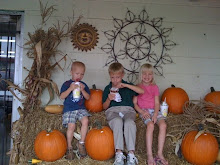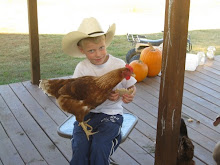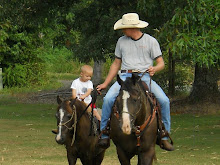These herbs are great for your children’s herb garden. Pick a few or grab them all!
ALOE VERA – The great healing herb. Fresh leaves can be split and gel applied to treat minor burns, sun burns, insect bites and poison ivy. It can also be used internally for ulcers. Tender perennial, grow indoors in good light. May produce a spectacular blossom in crowded pot!
BEE BALM- An old fashioned favorite in any garden Bee Balm produces lovely red blossoms and are highly attractive to humming birds and butterflies. The blossoms are edible, delicious and make beautiful garnishments. The leaves make a delightful and soothing tea. It does best in full sun to part shade and tolerant up to 30 degrees.
CALENDULA – The famous “pot marigold” that was a staple vegetable green in times past. It’s most often grown for the lovely, yellow to deep orange, large flowers which are edible. The petals are delightful with salads, omelets, and cheese. It makes a great saffron substitute and is also used in natural dyes, soaps, and cosmetics. This full sun annual grows to 15 inches tall.
CHAMOMILE – This herb is a beautiful low growing, perennial evergreen. Chamomile tea is made from the fresh or dried flowers. Both flowers and leaves have a delicate apple scent. Extremely popular in Europe and is sometimes called the European ginseng. Chamomile tea is soothing and aids digestion. It is also useful in natural or organic cosmetics. It is traditionally used as groundcover in English gardens and pathways and can be used as a lawn substitute. Plant in full sun to part shade and this herb will grow up to ten inches.
LAMBS EAR – This slivery low growing foliage is ideal for contrasting and grey gardens; the softy downy foliage resembles lamb’s ears in feel and appearance. Once used to bandage wound the lambs ear leaves can be pressed and used in wreath making. Plant in full sun and your lambs ear will produce spires (up to 12 inches) of light blue flowers in the summer. Silver Carpet is a non-blooming variety with neater appearance and more rot resistant.
LAVENDER – For centuries the highly fragrant lavender leaves and flowers have been used in dried sachets, scented soaps, perfumes, lavender wands and potpourris. Lavender oil is an important article of commerce and considered to be one of the most endearing scents in the world. A delight for any garden, all lavenders require WELL DRAINED SOIL and FULL SUN. Mulching with sand or gravel will reduce leaf splash and fungus problems.
English – Vera or true lavender and the most well known variety. This very hardy evergreen produces pale lavender blooms on long slender stems and grows up to 30 inches.LEMON BALM – Plant emits a strong lemon scent and adds a nice flavor to drinks, teas, salads, and more. Medicinally used for colds, flu, depression, and indigestion. The oily leaves were used in Victorian times to polish furniture. This hardy perennial will grow to 24 inches.
French – This prolific bloomer produces narrow toothed leaves and is great for containers. It is a tender perennial and produces fat blossoms.
Provence – This lavender is robust, produces light lavender blossoms, and is more rot resistant than most making it a great selection for Southern gardens.
Grosso – Possibly the best lavender selection for Southern gardeners this plant is highly rot resistant and produces nice deep, fat lavender blossoms.
Munstead – This English variety of lavender is both a prolific bloomer and has fragrant foliage in the right conditions. The foliage is variable and the blooms are a deep purple. However, this lavender will only grow up to 18 inches tall.
Lady – This lavender blooms first year from seeds, has a compact branching habit and grows up to 10 inches in height. Many believe it to bea big improvement over the English varieties.
Fernleaf – The carrot like foliage makes this a very different looking lavender. It is not as fragrant but the blue/purple flowers stand out. It is tender and grows to about 24 inches in height.
MINT – No green thumb is required for growing these tough little splashes of flavor and aroma! They have a multitude of uses in the kitchen, in commerce, and in medicine. Mints can be grown indoors or out in full or part sun. All mints are low growing and spread by runners. They should be contained unless you want them to spread. Don’t be fooled by “mint seeds” as true mint cannot be duplicated except by cuttings.
Apple – The soft gray-green leaves have an apple menthol fragrance and is delightful in teas and fruit salads. A large planting of this aggressive grower can cover a hillside in one season!
Chocolate – One of our favorites, this mint is a peppermint patty for the nose and palate! The bronzy peppermint-like foliage is delicious in coffee and cookies or just to eat by itself!
Orange – Treasured for its special fragrance its unmistakable citrus aroma is fantastic in fruit punches, teas, orange juice, and potpourris. The orange mint oil is an ingredient in chartreuse and many perfumes. It makes a lovely and useful plant in a hanging basket.
Peppermint – Also known as candy mint, a tea from this mint is a refreshing alternative to coffee or regular tea. It is excellent for stomach indigestion and lends itself to many uses in the kitchen.
Pineapple – A spin-off from apple mint, but with lovely white variegation and a sweeter, fruiter scent this variety is great in fruit salads and as a garnish; it works well with chicken too! Not as aggressive as apple, pineapple mint works well in containers with other plantings.
Spearmint – The best cooking mint and is excellent with carrots, peas, potatoes, and for making mint sauces for roast lamb. For a real treat try it in green salads or tabouli and other Greek dishes for a flavor sensation!
NASTURTIUM – An old fashioned favorite and for good reason, both leaves and flowers are delicious and add a sweet radish peppery flavor to tossed salads and makes a gorgeous garnish. They have unusually high vitamin C content. Immature green seeds can substitute for capers. The spicy-rose fragrance and beautiful mix of colors makes a great hanging basket. This cool season annual can sometimes struggle through some Southern summers to revitalize or reseed in the fall.
No children’s herb garden would be complete without the Stevia, nature’s own sweetener! Our kids eat them right out of the garden for a sweet treat! BONUS! Though nontoxic, stevia plants have been found to have insect-repelling tendencies. Their very sweetness, in fact, may be a kind of natural defense mechanism against aphids and other bugs that find it not to their taste.
Since herbs are easy to grow the success rate of your children's garden or herb container has a high probability producing through out the summer and will return year after year. So get out there and enjoy some time together... gardening is an activity the whole family can enjoy!

















































Thanks for this - we're headed out to pick out seeds for the kid's vegetable garden, so we might add some herbs in too!
ReplyDelete